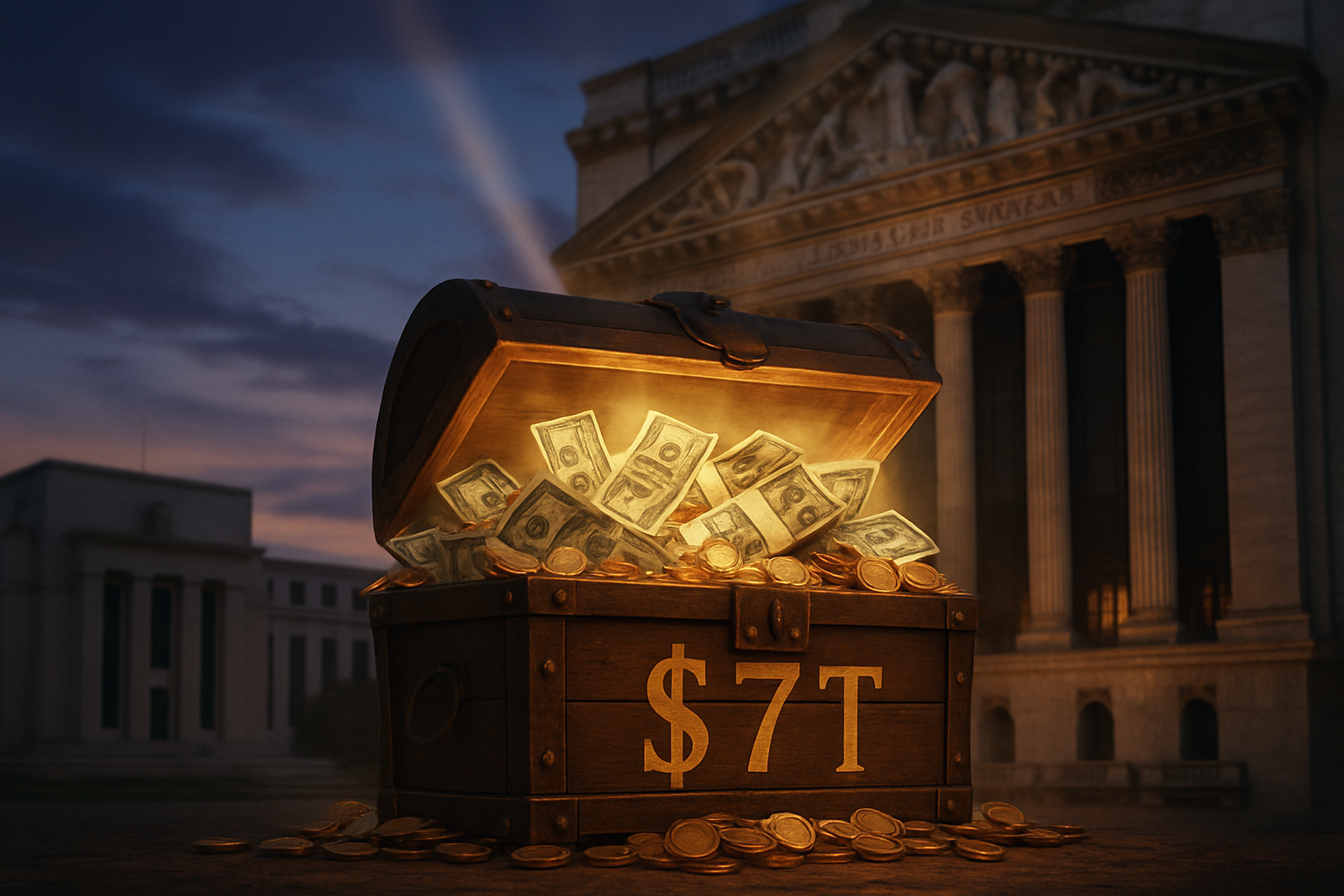The market's buzzing again with a familiar fairy tale—that magical "$7 trillion cash pile" supposedly waiting in the wings, ready to flood into stocks once the Fed starts cutting interest rates. It's the financial equivalent of Bigfoot: often discussed, rarely seen, yet somehow never stops capturing our collective imagination.
I've been hearing variations of this story for the better part of two decades covering markets. Trust me, it never gets old... to the people telling it.
Let's break down what we're actually talking about here. This alleged mountain of cash isn't stuffed under Wall Street's mattress. It's primarily parked in money market funds, T-bills, and various short-term instruments currently yielding a tidy 5% with minimal risk. Not too shabby, considering.
The prevailing theory—and I use that term loosely—suggests that once Powell and company start their rate-cutting campaign, yields will fall, and investors will frantically scramble to move their precious capital into equities for higher returns.
There's just one teensy problem with this narrative: it fundamentally misunderstands how money flows through markets.
Look, cash doesn't just "sit on the sidelines" watching the game, waiting for the coach to put it in. Every dollar in existence is already invested somewhere—whether that's cash equivalents, bonds, stocks, real estate, or (God help us) your nephew's crypto scheme that's definitely not a pyramid, just shaped like one.
When somebody buys a stock, somebody else is selling it. Full stop.
The total amount of money in the system doesn't magically expand because the Fed cuts rates (well, not directly anyway, but that's a discussion for another day). What we're really talking about is a potential shift in preferences—a reshuffling of the deck, not adding new cards.
I call it the "asset allocation shuffle," and it's as predictable as playoff disappointment for my beloved Mets.
That said, there is a kernel of truth hiding in all the hyperbole. Lower rates do historically correlate with higher equity valuations, for several reasons that actually make sense.
Discount rates used in valuation models decrease, making future cash flows more valuable in present terms. Companies can borrow more cheaply, potentially boosting profits. And yes, the relative appeal of dividend stocks improves compared to fixed income alternatives that suddenly look less attractive.
But here's where it gets tricky (and where most of these breathless "$7 trillion" headlines fall apart): the market is already pricing in most of this expected rate-cutting cycle. The S&P keeps hitting new highs despite the Fed having done precisely nothing rate-cut-wise yet. Markets, as they say, climb a wall of worry—not a mountain of cash.
Having covered three Fed rate-cutting cycles in my career, I've noticed something important: context matters enormously. And the uncomfortable question nobody seems to be asking is: why would the Fed be cutting rates in the first place?
The Goldilocks scenario assumes the perfect soft landing—inflation tamed without significant economic damage. But what if (bear with me) rates are being cut because the economy is actually deteriorating? In that case, that mythical cash might indeed start flowing... straight into Treasury bonds as a safe haven rather than into growth stocks.
Remember 2019? When the Fed's "mid-cycle adjustment" sparked a nice rally? The circumstances were completely different—we weren't coming off the highest inflation in four decades, and valuations weren't nearly as stretched as they are today.
And who exactly owns this "$7 trillion," anyway? Much of it belongs to corporations maintaining prudent cash reserves (which shareholders actually want them to have, believe it or not). Some belongs to institutional investors with strict mandates. And some is held by regular folks who are, frankly, thrilled to finally earn something meaningful on their emergency funds after years of getting zilch.
The idea that all this money will simultaneously decide to pile into equities requires a collective shift in risk appetite that seems... well, let's just say I'm skeptical.
"This time it's different," they always say. And they're always right, just not in the way they think.
What fascinates me isn't whether cash will flow into stocks (some will, some won't), but which stocks might benefit if preferences do shift. Higher-duration growth stocks? Dividend aristocrats? Companies with fortress balance sheets? The answer hinges not just on the size of rate cuts but on the economic backdrop surrounding them.
I spoke with several fund managers last week who all had different takes. "The market's getting ahead of itself," one told me while nervously checking his phone for the latest CPI numbers. Another insisted, "There's so much cash on the sidelines, it has to go somewhere." (See what I mean about this narrative?)
So before you reposition your portfolio for the great cash flood of 2024, remember that markets rarely offer simple narratives that lead to easy profits. If investing were as straightforward as "Fed cuts rates, stocks go up," we'd all be dictating our memoirs from private islands by now.
The $7 trillion question isn't whether the cash exists—it does—but whether the story we're telling ourselves about what happens next matches reality.
History suggests it probably doesn't.
